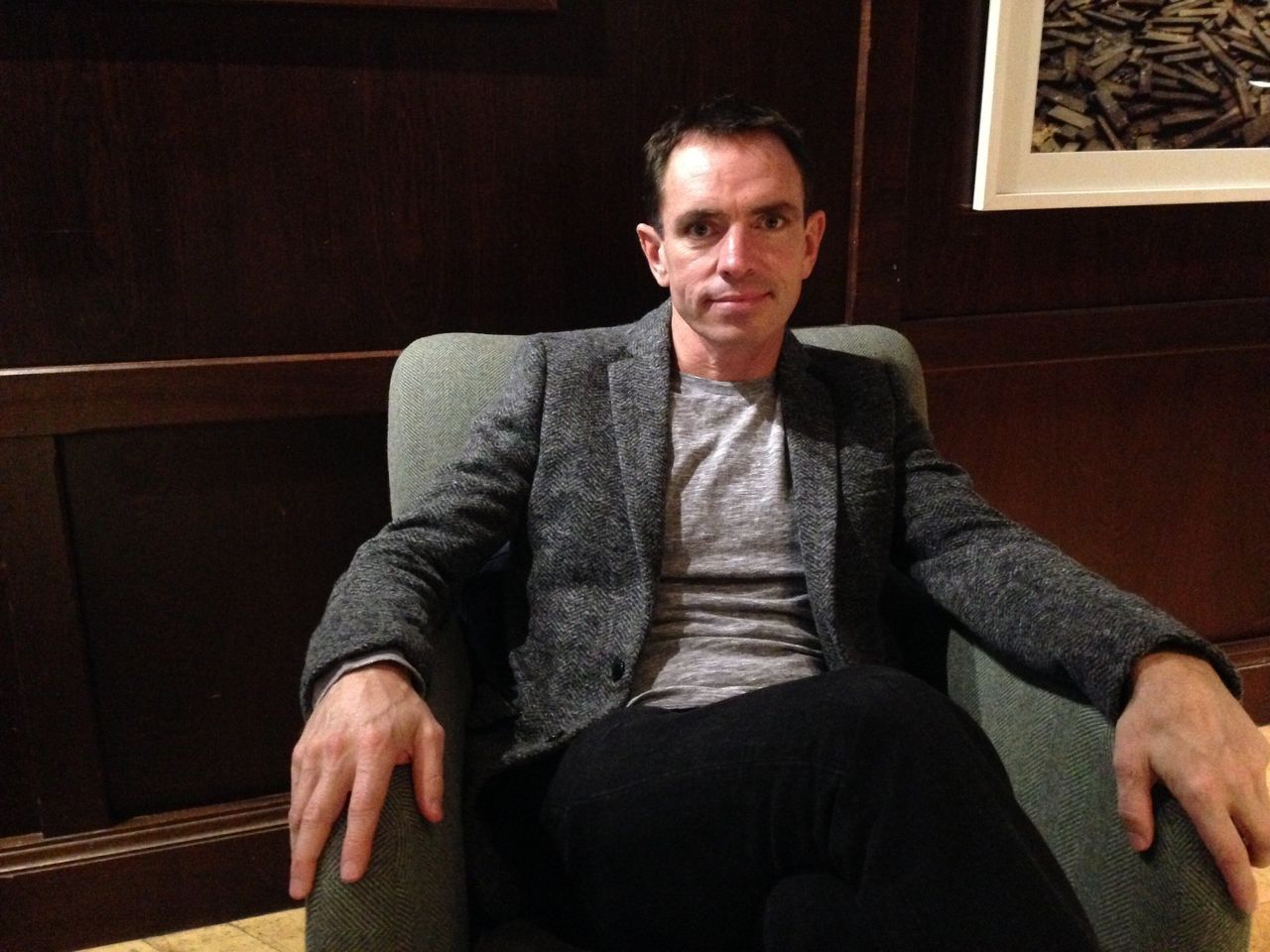Christmas is a time of intense relief for the man behind the John Lewis adverts.
Ben Priest, 47, has been working on this year's ad, the Man On The Moon, since February. As the Executive Creative Director of John Lewis’s ad agency Adam&EveDDB, he has expectations on his shoulders every November, when Britain goes wild over a two-minute advert for a department store.
In the last few weeks the John Lewis phenomenon – the video about a little girl sending a present into space to the man on the moon has been viewed 17 million times on YouTube – has led to a level of attention that Priest is “not entirely comfortable with”.
Now, sitting over tea in London's Groucho Club, he’s like a man discharged from his own space mission. “There’s a lot of expectation and hype around it these days, which has happened by accident and over time," he says.
“It’s a lot of work and if I’m honest, the day that it went out, I went back home to Sussex, picked the kids up from school, turned the phone off and spent the weekend in the real world.
“There’s a window of the first two or three days where you don’t want to see or hear anything. I still haven’t seen it on TV. But I’d be lying if I didn’t say that in the first day I was checking to see how many people watched it on YouTube,” he admits.
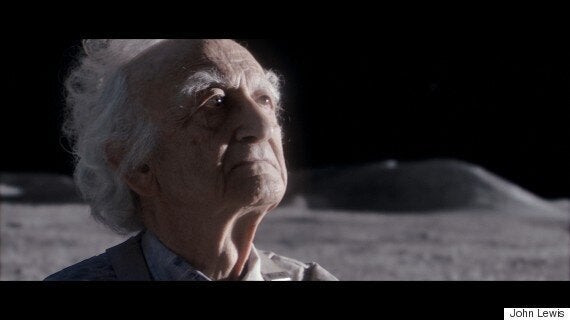
The Man On The Moon in this year's John Lewis Christmas advert
The secrecy around John Lewis's Christmas advert has reached a new peak, with anyone involved signing a non-disclosure agreement. “It’s crazy now,” Priest tells me. “It used to be just a very simple process, now everybody is NDA-d up to the eyeballs.”
The post-production studio where the ad was developed was similar to a war room, he says. “They had all the operators in there at the same time, and no-one could get in or out.
“There was a sort of locked-down floor where the door was locked, and all the windows were blacked out so that no-one could see it. On the inside not the outside – we’re not expecting anyone in a helicopter to come along,” he jokes.
Even Craig Inglis, the head of marketing at John Lewis, was made to sign an NDA for his own advert when he arrived one day and wasn’t recognised by the receptionist.
Adam&Eve’s staff can’t discuss the ad with their families before it comes out, or mention anything about it on social media.
In contrast, Priest’s own kids – daughters aged six and eight – have been “bored by it”, he says. “They’ve lived through every twist and turn. I probably shouldn’t say this because John Lewis will kill me, but they’ve seen every single advert in development.”
“The difficult thing around it is the music to be honest, because we get people to demo,” Priest says. If his agency requests the rights to a song, or meets with a well-known singer, that can be a giveaway to other agencies in the competitive Christmas advertising market.
This year’s track, a cover of Oasis’s Half The World Away, was only finalised a week before the ad went out, beating the other option, a new version of Steve Winwood’s Higher Love.
The singer, 19-year-old Norwegian singer Aurora, was relatively unknown, but Priest’s team can now take its pick of high-profile artists, many of whom approach them proactively.
“When we first started out no-one would touch us with a barge pole, but people are really, really receptive to it now, because they have been out of the limelight for a while, they have a new album out after two years, or they’re not so well-known and what to be.”
As a result, he hints, stars have recorded demos and been turned down. “We’re lucky, but then it becomes beholden on you to handle the whole thing with good manners and away from the spotlight, because it’s a funny process and most of them are demoing having not seen the ad because it’s so secret now we can’t show them.”
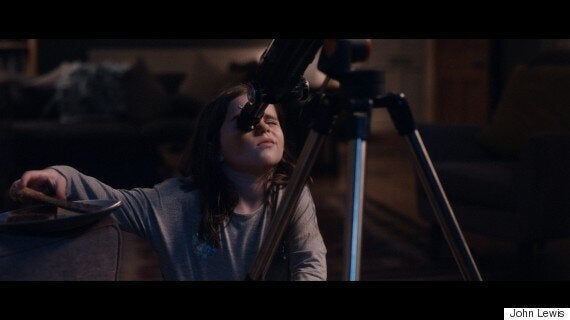
A shot from The Man On The Moon
Filming the ad itself took eight or nine days and was surreal, he says. “It was amazing, we were at the Warner Brothers lot where they do Harry Potter, and we basically built a section of the moon so that the computers could then grab that and extend it.”
The actor who plays The Man On The Moon, 77-year-old Frenchman Jean Masini, was effortlessly cool on set, Priest claims – something he feels was evident in a behind-the-scenes video showing how the ad was made. “It’s actually very embarrassing for all of us because he’s by far and away the coolest person in it, by a mile. You’ve got all of these advertising people in their 20s, 30s and 40s, and he’s just got these big glasses on and he’s like [puts on a French accent]: ‘And zere it is: telescope.’”
London production company The Mill spent several months producing the ad, and even agonized over whether the sizes of the Earth and moon should be scientifically accurate. “In the end we just went with what felt right,” says Priest. “It’s absurd anyway, his head would explode off his shoulders.”
When Adam&Eve started working with John Lewis in 2009, they’d make a 60-second TV clip and “a few newspaper ads”, a paltry affair compared to this year’s two-minute-thirty second ad, merchandise and the rumoured £7 million budget for the whole campaign last year.
“No-one knew who we were back then and it wasn’t an event, and there are times when you think it would be nice to go back to that place,” Priest laughs. “It’s a high-class problem isn’t it?”
Now, he experiences a sort of celebrity when the ad comes out. “You get people who you went to school with - or people you haven’t seen for 20 years, or people you used to work with, or an Irish third cousin of mine who’s a priest – contact you directly, and that’s great.”
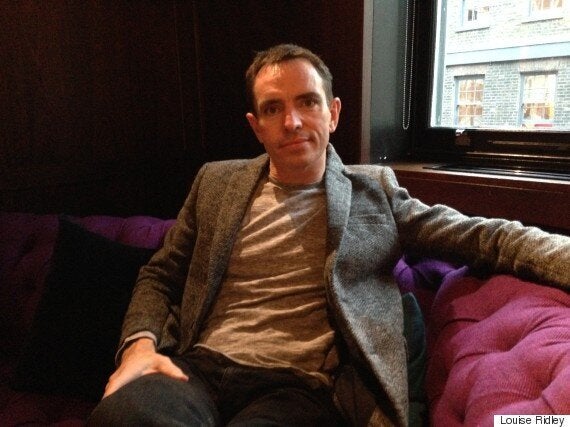
Priest is the creative lead for John Lewis' advertising agency
This year’s ad has struck a particular chord with some through its focus on the loneliness of elderly people and its partnership with the charity Age UK. “I’ve showed it to people for instance who’ve lost both their parents and things like that. I don’t think you’ve ever had that reaction about a penguin,” he says, referring to last year’s ad featuring the animated Monty The Penguin.
His kids laugh at him when he gets emotional about the ads - “They always point and say ‘Daddy’s gonna cry!’” – although his tears are sometimes more connected to the hard work than the ad’s storyline.
“I’ve cried during the process. You do go slightly mad sometimes. I remember lying in bed with a computer watching the snowman [from the 2012 John Lewis Christmas ad] over and over and over again, thinking has it got that thing? I think now I’m old enough that I didn’t go mad this time.”
But one ad, The Long Wait in 2011 which showed a little boy waiting to give his parents a present, makes Priest well up for personal reasons.
“If I see that I still get emotional. I was getting divorced that year, and I’m very lucky that I still live in the village that my kids and my ex wife do, and we’re actually very good friends, but at the time it was a real story about a child and it moved me.”
He didn’t cry when he saw The Man On The Moon for the first time (“You’ve seen it 10,000 times in other forms by then”) but did choke up when he went to the studio where the Royal Philharmonic Orchestra was recording the strings for Half The World Away. “I just walked in and it's this incredible sound".
“The weird thing is you do a lot of the same things every year [as you're making the ad], so I was in another studio last year listening to the strings for Tom Odell [covering John Lennon’s Real Love for the Monty The Penguin advert]. This will sound so wanky it’s unbearable, but it kind of chronicles your life, it’s like a marker for where you are.”

Monty the Penguin in the 2014 John Lewis Christmas advert
Despite the weeping-inducing qualities of John Lewis Christmas adverts, he says they have never meant to make anyone cry. “We’ve never set out to do that, ever. It’s pretty odd and amazing that people are excited about the coming of an ad. The key is, is it a good story, is there a truth at the heart of it and is it not too big and bombastic and pleased with itself?”
Though the hype has grown, the process of making the ad hasn’t changed. All 50 ‘creatives’ in the agency have a chance to come up with the idea for the ad by pitching scripts for it. The brief is the same ever year: ‘Thoughtful giving’.
“All my teams know now that’s what it will be next Christmas so they can start work on it now,” Priest explains.
Out of hundreds of script ideas, the successful writing duo – advertising creatives tend to work in pairs – were Sophie, 32, and Milo, 28.
“It was a huge deal for them," Priest explains. "We narrow it down to three or four scripts and we go and talk to John Lewis. Then you leave it, you go away, you write a bit more and you keep coming back. We had a board when we sold the idea which was full of beautiful old faces and the lunar landscape.”
After John Lewis’s approval, and spending some time playing with telescopes, The Man In The Moon was born.
Priest sees him as “a sort of mythical character, but actually a character who represents anyone whose lonely, or on their own.”
Some viewers have taken the storyline a little too literally, and demanded to know how an old man could survive on the moon - but this doesn't annoy Priest. “It absolutely depends on what kind of person that you are. Some people are like, ‘But he’d have to have a helmet, and an oxygen mask… this is impossible.’ But that’s a good response if you’re that sort of person.
“We’ve never done anything that everybody has loved or everybody has naturally got," he adds.
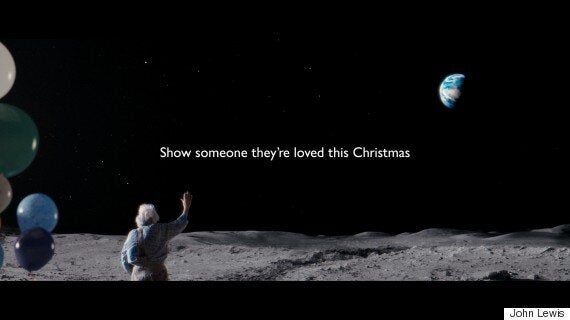
The Man On The Moon waves back to Earth
How would he imagine the man in the moon’s story continuing after the ad ends? “I’m afraid his job is to be the man on the moon, there’s no getting round that. The good news now is that he can look and wave at someone and he knows that he’s cared for," Priest smiles. "But I’m afraid when you’re the man on the moon the job description is very much in the title.”
It’s important to know when to end the story in an advert, he explains, using the 2011 John Lewis Christmas ad, The Long Wait as an example. It ended when a little boy wakes up on Christmas morning and presents his parents the gift he's been waiting to give for weeks. “Can you imagine if his parents opened it and it was a specula?” Priest says.
He likes the fact that John Lewis could make space-themed educational toys to sell as part of the Man On The Moon campaign: “There’s a limit to how many onesies I think we can fill the world with.”
Looking back, he may have drawn on his own childhood when developing the script: “When I was growing up, in our house in a village in Sussex, we had an old lady who lived behind us, and a retired couple who’d been in service, like Upstairs Downstairs. My mother would have them for lunch on Christmas day. When my brother and I were five or six we’d be like ‘Oh God, do we have to?'”
He feels it’s hard to convince an audience that old people matter, when there is such suffering in the world. “At one time when we were talking about the ad, there was that awful picture of that little boy washed up on the beach in Syria. When you talk to people about being old, I think it’s very easy for people to go ‘well, you know, everyone gets old, live with it.’ It’s difficult to be shocking and to get people to care about it.”
Despite his year-round focus on Christmas for work, he “still gets really excited.”
His daughters “100% believe” in Santa Claus, and rituals include eating sausage and mash on Christmas Eve every year.
They already have a telescope, which has been used with limited success: “What happens to us it that it very quickly comes out of the sky and down on to the ground and ‘what’s that over there Dad?’ and it’s all blurred and impossible to see. So I don’t think I’ve got two budding astronomers.”
Priest makes a tradition out of giving his kids something related to the John Lewis ad every year, and with telescopes on sale in the store, he thinks "we could be upgrading.”
His own festive wish is a simple one: “What I want for Christmas is Christmas, just to be at home and not to be at work, and to hang out with everybody and to see old friends and spend some time with the kids.
“If Crystal Palace could win all their games and Brighton could lose all their games, that’d be an added bonus.”
